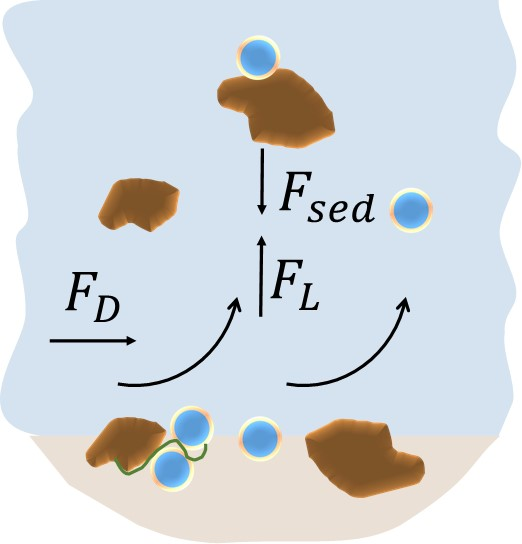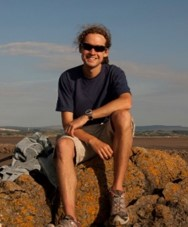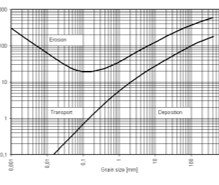Sediment resuspension
Sediments in lakes and rivers form when particles settle from the water onto the river- or lake bed. The particles that make up the sediments remain on the river bed as long as the river does not flow fast enough to erode them. Entrainment of particles from the bed sediment into the water column occurs when the sheеr force of the flowing water is high enough to either levitate the particles or overcome their adhesion to other particles or structures in the river bed. Thus, resuspension is not very common in lakes.
The flow velocity required to erode or resuspend a sediment depends predominantly on the size of the particles, their density and the roughness of the river bed. It is counter-intuitive that large (>0.1 mm) and small (< 1µm) particles are most difficult to erode. The reason is that larger particles are too heavy to be suspended and quickly settle back, while the small ones stick together tightly and do not experience much of the force of the flowing water because they are so small. Additionally the particles are "glued" together by substances created by microorganisms.
Resuspension usually happens during high flow, stormwater events. Remobilized or resuspended particles add to the suspended sediment load carried by the river or estuary. During rainfall events rivers suspend and hold in suspension sediment from the river bed; when the rainfall stops and the river flow decreases the re-mobilized sediment is then deposited.
There are numerous ways to calculate resuspension. For example, one can define a critical velocity for resuspension as a function of the particle size and density. The NanoFASE water-soil-organism (WSO) model takes a different approach, calculating resuspension based on stream power (a function of flow rate) and a maximum resuspendable grain size.
 |
|
Algorithms |
|
\(j_(SPM,res)=\beta lf_{m}WM_{sed}m_{prob}\omega f_{fr}\)
Resuspension in the NanoFASE WSO Model
Read more |
|
|
Consult the NanoFASE Library to see abstracts of these deliverable reports: Report D2.2 Spatial transport framework Report D8.2 Driving Forces on NM Behaviour in Natural Waters for Agglomeration and Transformation |
Contact
 Sam Harrison
Sam Harrison
Centre for Ecology and Hydrology (CEH)

Frank von der Kammer
University of Vienna, Austria
Email: frank.von.der.kammer@univie.ac.at

